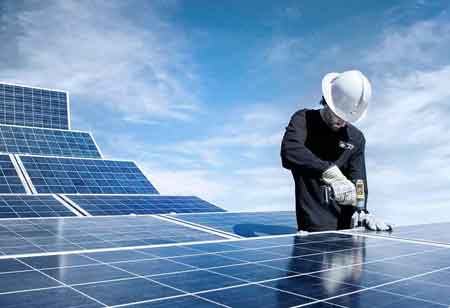Thank you for Subscribing to Energy Business Review Weekly Brief
The Key Components and Functions of Solar Energy Systems
Solar energy, the radiant light and heat emitted by the Sun, is harnessed through various methods, including photosynthesis

By
Energy Business Review | Wednesday, July 24, 2024
Stay ahead of the industry with exclusive feature stories on the top companies, expert insights and the latest news delivered straight to your inbox. Subscribe today.
Discover the essential components of solar energy systems, including photovoltaic panels, inverters, racking systems, and performance monitoring systems. Learn how these elements work together to convert sunlight into electricity and optimize energy use.
Fremont, CA: Solar energy, the radiant light and heat emitted by the Sun, is harnessed through various methods, including photosynthesis in plants and solar heating. For electricity generation, solar energy relies on photons—subatomic particles originating from the Sun's core. These photons embark on a journey that can take between 100,000 to 50 million years to reach the surface and just over eight minutes to travel from the Sun to Earth. Upon reaching solar panels, photons initiate the photovoltaic effect, converting sunlight into electricity.
Major Components of Solar Energy Systems
Solar panels are the most visible part of a photovoltaic system, but they represent only about 30% of the overall system cost. The following are the key components of a solar energy system:
Solar Photovoltaic Panels
Conventional solar panels consist of silicon cells, a metal frame, wiring, and glass. These panels are protected from extreme heat and humidity by insulating and protective back sheets.
Inverters
Solar panels generate direct current (DC), but most electrical systems require alternating current (AC). Inverters convert DC into AC, making the energy usable in commercial and residential applications.
Racking and Mounting Systems
Racking and mounting equipment do more than secure panels to a roof or the ground; they also optimize the orientation for maximum solar exposure. Choosing the right mounting system and position is crucial to ensuring the highest output from a solar energy system.
Solar Performance Monitoring Systems
A performance monitoring system includes a dashboard that displays key statistics of the solar panel system in one location. This system provides information on energy output and consumption, helps optimize energy use, and alerts users to any issues with the system. Monitoring systems rely on inverters and are often controlled by software that communicates between the inverter and other equipment. They collect data as the inverter converts DC to AC, making it available to homeowners via companion applications and smart home devices.
Performance monitoring systems can gather data through a central inverter or individual microinverters attached to each solar panel. The latter method offers more detailed insight into the performance of each panel and enables quicker identification of issues.






